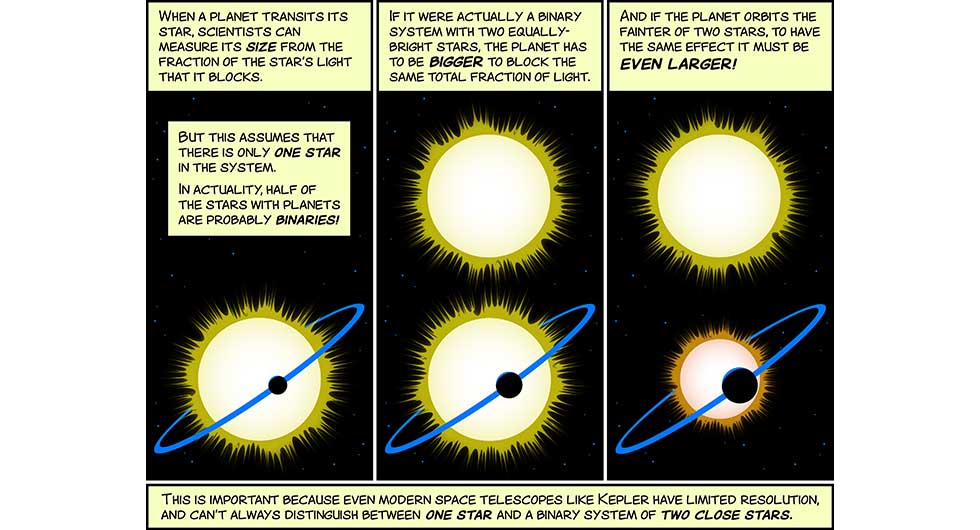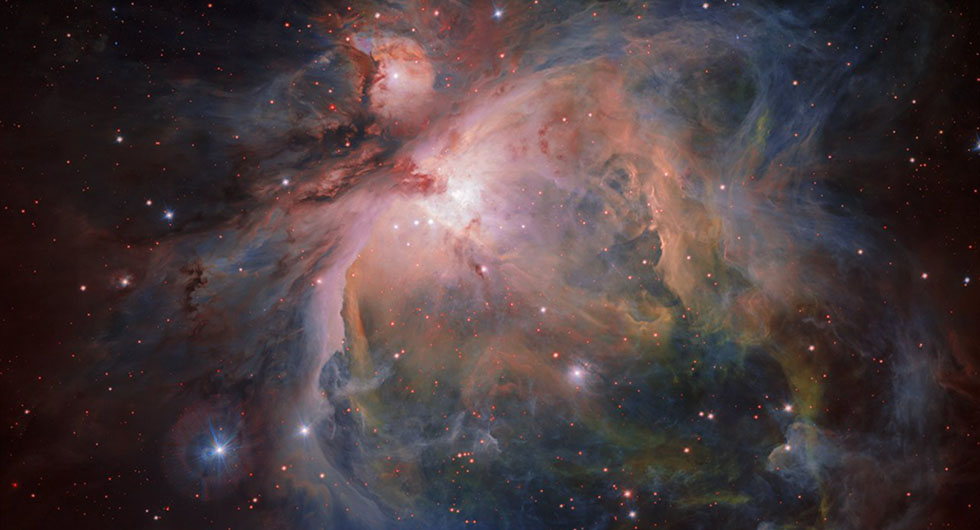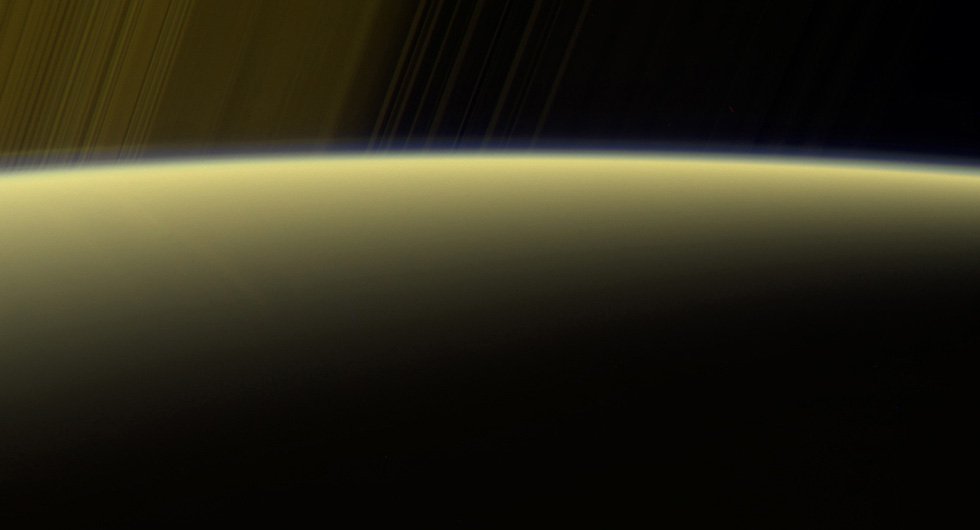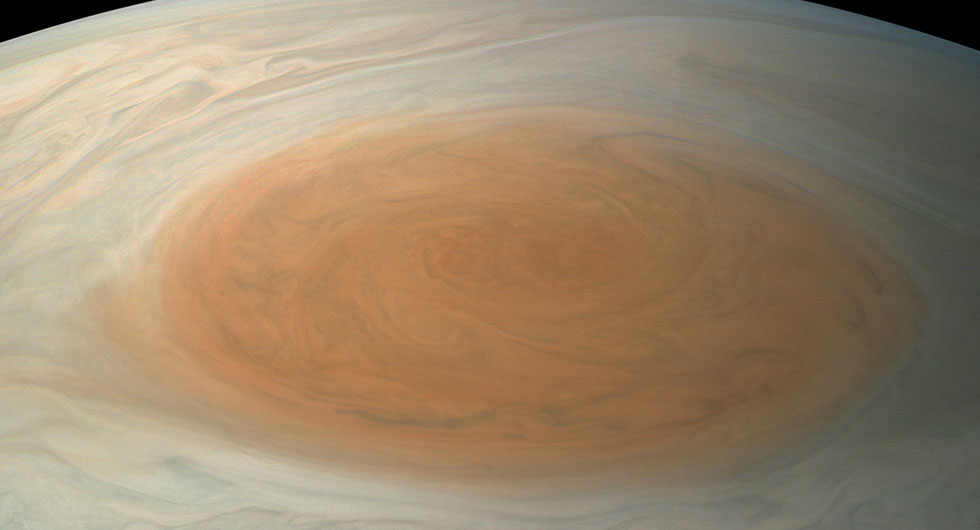July's Stunning Space Pictures
This month’s slideshow features an exotic sunrise in our solar system and a comic about exoplanets.
Image
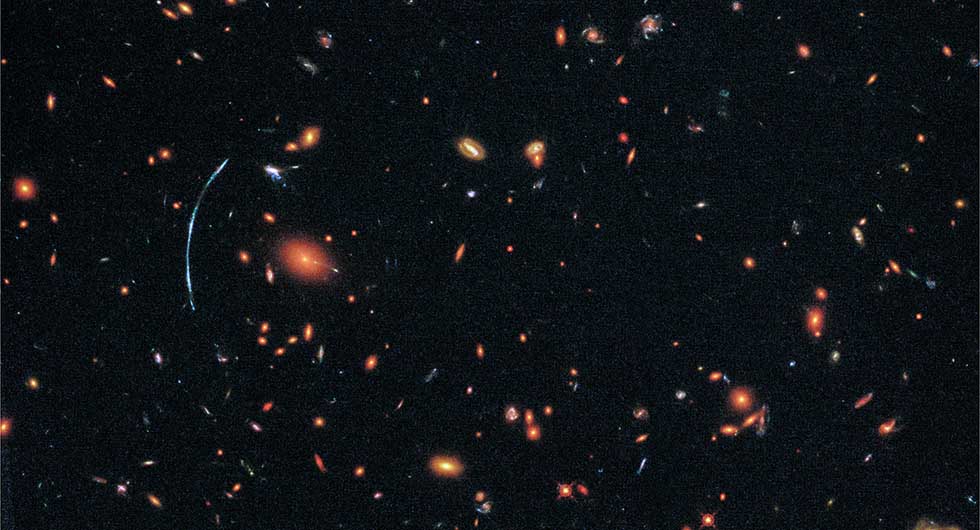
This month, Hubble released a wide field image of galaxy cluster SDSS J1110+6459. This cluster contains hundreds of galaxies, including a distant background galaxy shown on the left as a distinctly blue arc. This galaxy contains star-forming regions that span only about 200 to 300 light-years across, contradicting previous theories that such regions had to be at least 3,000 light-years in size.
Media credits
(Inside Science) -- Fascinating photos of planets, stars and galaxies come together in this month’s astronomy slideshow. Check out recent snapshots of the swirling gases of Saturn and Jupiter, view a stellar nursery in the Orion Nebula, and learn how tricky it can be to estimate the size of an exoplanet.
Filed under


